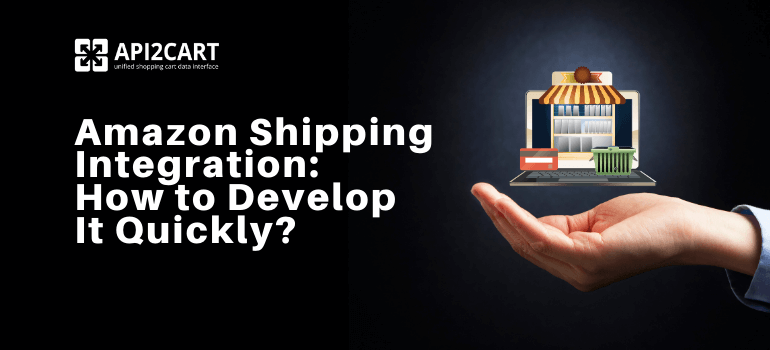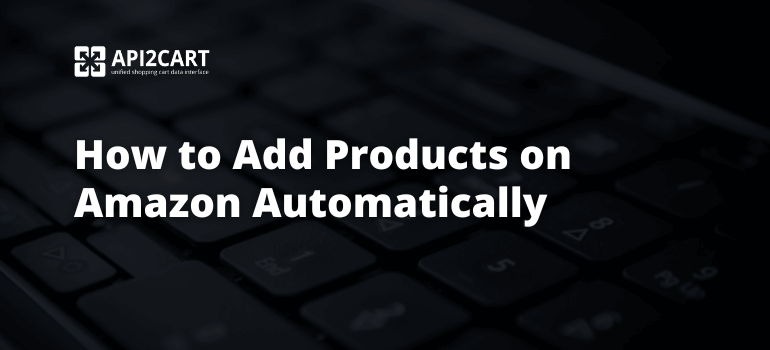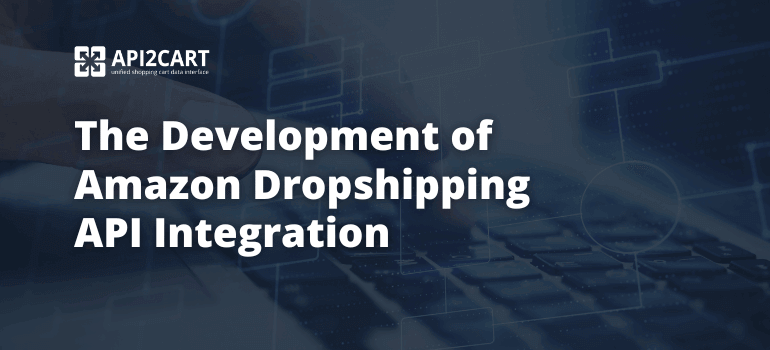
Amazon is undoubtedly the largest and most successful marketplace in the world. Used by around 2 million sellers to promote their products, Amazon provides an excellent opportunity for vendors across different backgrounds and locations to profit from trading on the global market. With the current structure, Amazon e-merchants cannot automate their retail processes without special software solutions. That is why they often use services like yours to make order fulfillment, shipping, and other kinds of operations more manageable.
In today's article, we will explore how you can develop the connection with Amazon API and get orders from this marketplace. It is necessary because any eCommerce software provider requires order data to complete their designated duties in the market chain successfully. We are talking about multichannel systems, shipping management, product information, marketing automation, dropshipping automation solutions, etc.
The ability to get orders from Amazon requires developing the integration between such systems and Amazon API.
So, if you provide eCommerce software for e-merchants and need access to Amazon order data, the connection to Amazon API is a must-have for you. It may bring you huge benefits for your company.
What You Need to Know about Amazon and Amazon API?
Amazon is the world’s largest marketplace that is popular among e-merchants from across the globe. The consumer base of Amazon is exceptionally high, with its revenue increased from $50000m in 2010 to $400000m in 2020. Amazon has developed multiple products and services across the years such that today it is synonymous with online shopping in itself. On average, small businesses in the USA sell more than 4000 items per minute through Amazon. These statistics approve the popularity of Amazon among online sellers.
Amazon has approximately 10 million sellers worldwide. Their number continues to grow. For example, in the first quarter of 2021, more than 283,000 sellers sign up to sell on this marketplace.
The reliable integration with Amazon API allows eCommerce software providers to propose their services to all the sellers who use this marketplace.
Every eCommerce software needs to have a connection with Amazon to access data on products, orders, customers, and categories. Integrating with Amazon not only expands the market share but also vastly increases the customer base of any eCommerce software. This would consequently increase your software sales and have a positive on your firm’s revenue.
However, the process of Amazon integration development is not so easy. Amazon API is really old. Without certain skills, knowledge, and previous investigation, it is quite difficult to work with Amazon API, get orders and the other info from it. Moreover, Amazon API Docs are really complicated and do not contain the actual examples.
What Your Software Can Do Having Access to Amazon API?
Every eCommerce software needs access to order data to perform its functions. Below there are a few examples of how integration to Amazon API helps various solutions to work with Amazon e-merchants.
Multichannel systems are one of the most integral structures within the eСommerce industry. Multichannel solutions’ role is to manage eCommerce operations across multiple sales channels using the order data from platforms like Amazon. This order data is imperative for these systems’ functioning. They use such data to sync inventories across multiple channels, create shipments, update order statuses, and generate up-to-date reports. All these functions are possible only when the multichannel system can get order data from Amazon through Amazon API. If this is not done, the data cannot be obtained.
Marketing automation software is indispensable in sales and customer retention. These systems send offers and discounts to customers through a series of targeted automated emails, identify and track consumer purchase patterns, potentially filter customers based on engagement, nurture these leads, and retain the existing customer base’s loyalty. These tasks can be completed only by getting order data from platforms and marketplaces like Amazon.
Shipping management systems are responsible for the entire shipping process and delivering the product to the e-stores' customers. These software requires order data to sync inventory levels, create the shipments, generate shipping labels, and provide order-related updates regularly. None of these functions can be performed without order data from Amazon. By integrating the shipping management software to Amazon API, these systems can ensure hassle-free and immediate access to accurate order data.
Amazon API Integration Development
Amazon API integration development is a technically complex process. It can be highly cumbersome as it involves a massive amount of time, effort, and money. Furthermore, the integration process is not a one-time event and requires constant upgrading and regular maintenance.
API2Cart provides you a one-stop solution to all these problems. Through our service, you can effectively connect your software with 40+ eCommerce platforms and marketplaces such as Amazon, Magento, Shopify, and Prestashop at once. The service provides a unified API guided by more than a hundred API methods to efficiently manage data from the stores such as products, customers, orders, and shipments.
We offer a 30-day free trial period. Post this, API2Cart offers multiple packages with flexible pricing for various eCommerce software providers. Contact us to know more about our features and pricing.
Amazon API: Get Orders From This Marketplace Easily
API2Cart provides service most efficiently and cost-effectively as possible. API2Cart has more than 100 API that helps you to manage Amazon data effectively. Two API methods enable you to access and retrieve order data from the e-stores powered by Amazon:
- order.info - This method allows you to retrieve information about a specific order that has been placed in Amazon. It provides all the data related to the order id, currency, billing address, shipping address, etc.
- order.list - This method enables to get the list of orders that have been placed in Amazon’s e-stores. It returns four orders by default
The response example of order.info method in JSON format looks like this:
{
"return_code":0,
"return_message":"",
"result":{
"id":"1",
"customer":[
{
"id":"26",
"email":"[email protected]",
"first_name":"Adara",
"last_name":"Cortez"
}
],
"status":[
{
"id":"3",
"name":"Shipped",
"history":[
{
"history":[
{
"id":"3",
"name":"Shipped",
"modified_time":"2014-03-25 15:29:00",
"notify":"True",
"comment":"Make Payable To: \nFrost\n\nSend To: \nAddress 1\n\nYour order will not ship until we receive payment.\n"
}
]
}
],
"refund_info": null
}
]
}
}
Using the info on orders, your eCommerce software can provide the following functionality to the clients:
- Provide all the order details your clients need on one screen. It includes order status, stock availability, and payment status
- Using flexible order filters to filter the orders by their status
- Updating order statuses at a rapid pace, whether individually or in bulk
- Managing and controlling inventory stock levels and shipping operations
- Organizing and analyzing data to generate detailed reports that provide meaningful insights
API2Cart is an efficient and affordable one-stop solution to all your integration needs. To know more about API2Cart, book a consultation call today!




Vince Duve
March 4, 2022 on 8:55 am
Thank you for this great post! Great Value! I will bookmark it looking forward to receiving the next coming updates!
SEO Tools
March 31, 2023 on 9:50 pm
Awesome! Its genuinely remarkable post, I have got much clear idea regarding from this post
Vein Finder
April 20, 2023 on 3:46 pm
I am truly thankful to the owner of this web site who has shared this fantastic piece of writing at at this place.